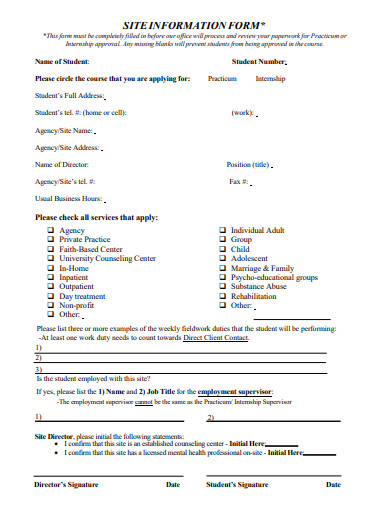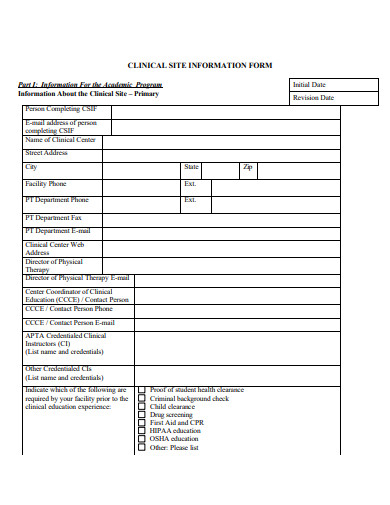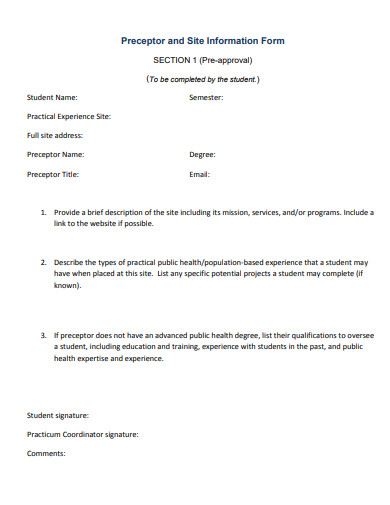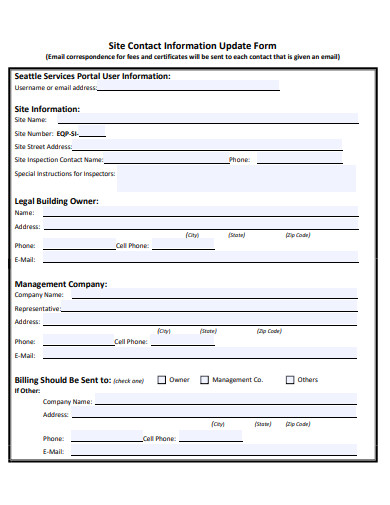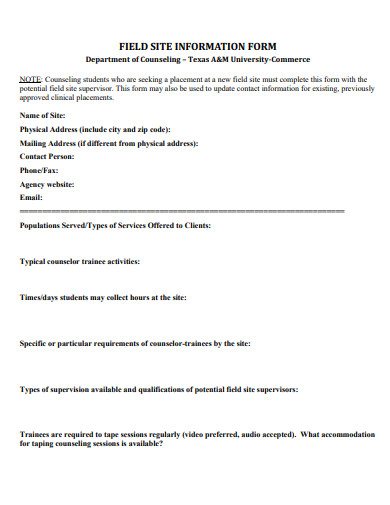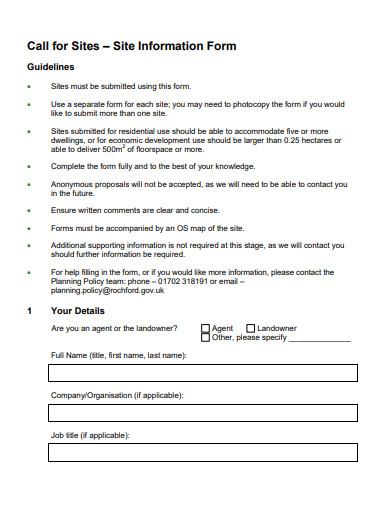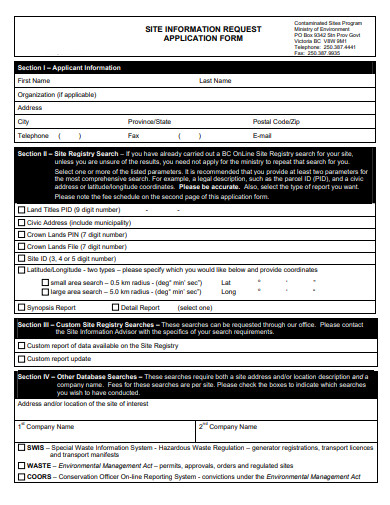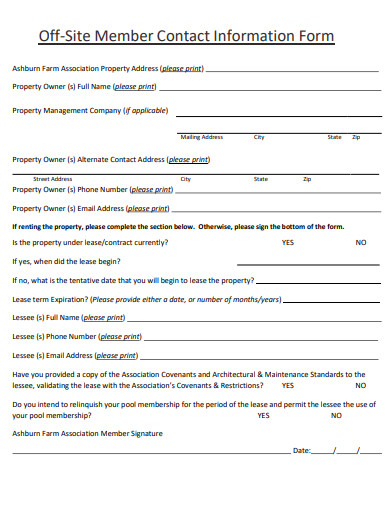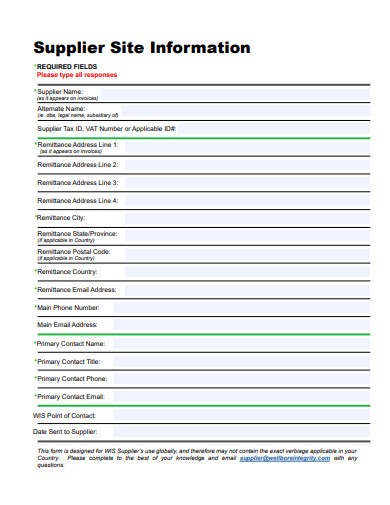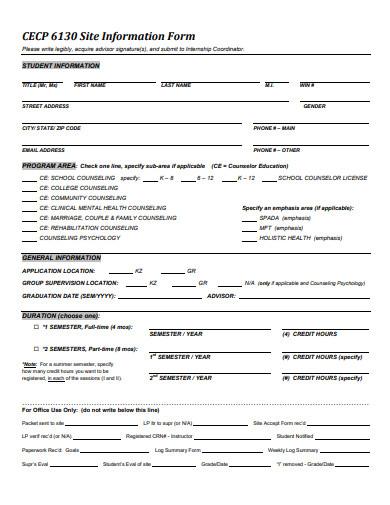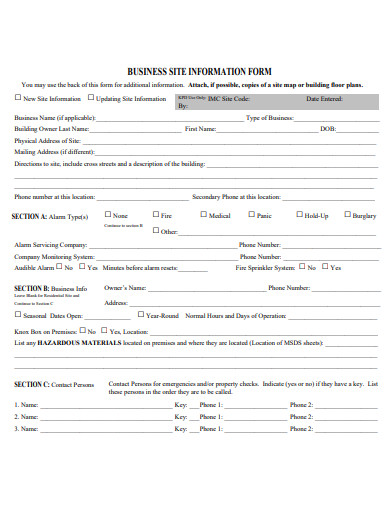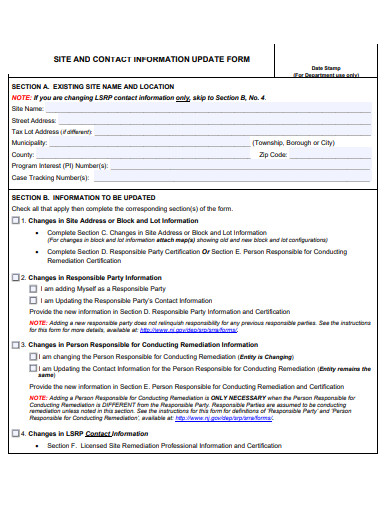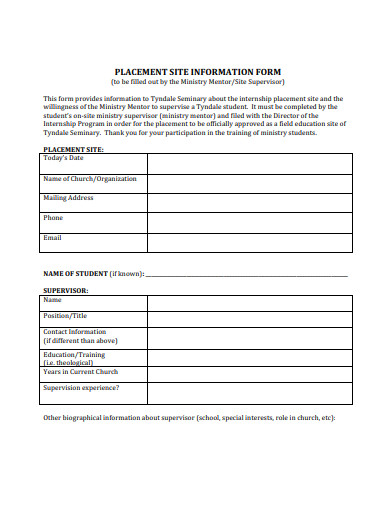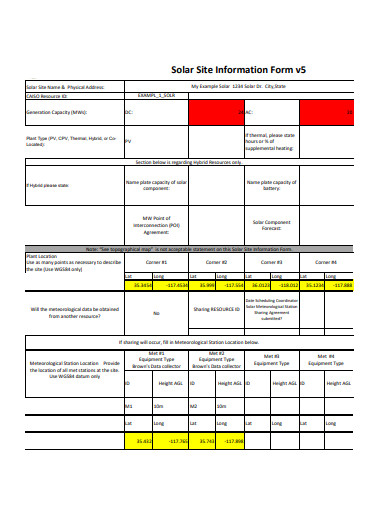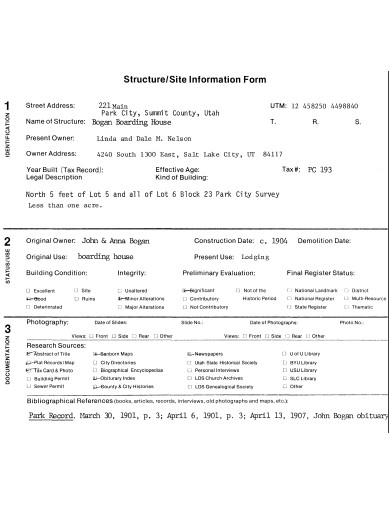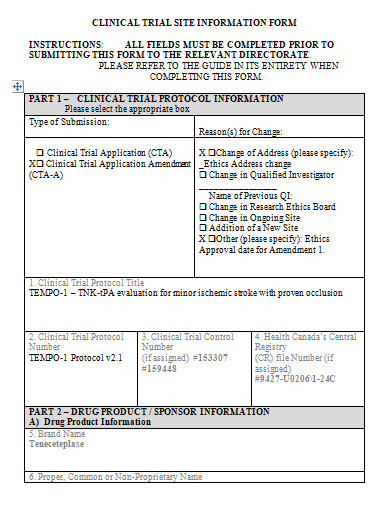In the modern age of information and technology, data collection and management play an integral role in various sectors, from urban planning to architecture and beyond. One crucial tool that has gained prominence in recent years is the Site Information Form. This form serves as a comprehensive repository of data related to a specific site or location, and its significance extends to fields such as construction, development, environmental analysis, and more. The foundation of any successful endeavor is sound decision-making, and the Site Information Form equips decision-makers with the necessary insights. Whether it’s a city planner determining the viability of a new infrastructure project or a real estate developer.
18+ Site Information Form Samples
1. Site Information Form Template
2. Clinical Site Information Form Template
3. Site Supervisor Information Form Template
4. Preceptor and Site Information Form Template
5. Site Contact Information Update Form Template
6. Field Site Information Form Template
7. Sample Site Information Form Template
8. Site Information Request Application Form Template
9. Off-Site Member Contact Information Form Template
10. Supplier Site Information Form Template
11. Formal Site Information Form Template
12. Business Site Information Form Template
13. Site and Contact Information Update Form Template
14. Placement Site Information Form Template
15. Site of Care Request for Information Form Template
16. Internship Site Application and Information Form Template
17. Solar Site Information Form Template
18. Printable Site Information Form Template
19. Clinical Trial Site Information Form Template
What is Site Information Form?
A Site Information Form (SIF) is a structured document or questionnaire that gathers and organizes essential information about a specific location or site. It serves as a comprehensive repository of data related to the physical, environmental, regulatory, and logistical characteristics of the site.
How To Make Site Information Form?
Creating a Site Information Form (SIF) involves careful consideration of the specific requirements and goals of the project or task at hand. Here’s a step-by-step guide on how to create an effective Site Information Form:
Step 1- Define the Purpose and Scope
Determine the purpose of the SIF. Are you creating it for urban planning, construction, environmental assessment, real estate, or another purpose? Clearly define the scope of information you need to collect based on the intended use of the form.
Step 2- Identify Key Stakeholders
Identify the stakeholders who will use the information collected in the SIF. This could include architects, engineers, planners, environmental experts, real estate agents, and project managers. Understand their information needs to ensure the form is comprehensive.
Step 3- Choose a Format
Decide on the format of the SIF. It can be a digital or physical form, a spreadsheet, a PDF document, or an online survey, depending on your preferences and the ease of data collection and dissemination.
Step 4- Develop Questions and Prompts
For each section, create specific questions and prompts that will guide the data collection process. Ensure that the questions are clear, concise, and relevant to the purpose of the form. Consider including maps, diagrams, or photographs to visually represent key aspects of the site. Visual aids can provide additional context and make the form more engaging.
Why is the SIF important?
The SIF is important because it facilitates informed decision-making, risk assessment, and efficient planning. It ensures that projects align with regulations, environmental considerations, and the site’s attributes.
What information does the SIF collect?
The SIF collects data related to site location, topography, geology, infrastructure, environmental features, historical significance, zoning regulations, and more. The specific information depends on the purpose of the form.
Do I need any special knowledge to complete the SIF?
While some sections of the SIF may involve technical terms, the questions are designed to be clear and accessible. If you’re unsure about any terminology, the form usually provides explanations.
The Site Information Form serves as an essential tool across various sectors by providing a comprehensive record of data about a specific location. Its role in aiding decision-making, facilitating planning, and mitigating risks cannot be understated. As technology continues to evolve, the Site Information Form will likely become even more sophisticated, enhancing its contribution to informed and sustainable development practices.
Related Posts
Sample Sworn Affidavit Forms
Vehicle Inspection Forms Samples & Templates
Sample Employee Advance Forms
Sample Child Travel Consent Forms
Sample Testimonial Request Forms
Sample Employee Details Forms
Sample Divorce Forms
Sample Attestation Forms
Employee Performance Appraisal Form Templates
FREE 9+ Sample Presentation Evaluation Forms in MS Word
FREE 10+ School Admission Form Samples & Templates in MS Word | PDF
FREE 30+ Patient Consent Form Samples in PDF | MS Word
FREE 10+ Sample Sign Off Form Templates in PDF | MS Word
FREE 11+ Sample Medical Consultation Forms in PDF | MS Word
FREE 8+ Sample Donation Forms in PDF | MS Word

